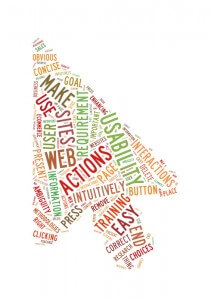The Top 5 Usability Myths
 When it comes to technology, there are various guidelines that are essential for good user experience. This includes accessibility, user interface, information architectures and usability. UX design is the ultimate human vs. computer interaction where certain methods and techniques are employed to produce a desired, predictable and well-executed result. Accessibility, user interface, information architectures and usability can be controlled by a designer to suit the uncontrolled aspects like goals, user's lifestyle and even habits. UX design uses the controlled aspects of technology to suit the uncontrolled.
When it comes to technology, there are various guidelines that are essential for good user experience. This includes accessibility, user interface, information architectures and usability. UX design is the ultimate human vs. computer interaction where certain methods and techniques are employed to produce a desired, predictable and well-executed result. Accessibility, user interface, information architectures and usability can be controlled by a designer to suit the uncontrolled aspects like goals, user's lifestyle and even habits. UX design uses the controlled aspects of technology to suit the uncontrolled.
Usability is a controlled aspect of UX design that seeks to ensure the end-user doesn't strain or doesn't encounter problems with the use of a web page or navigation. There are several myths that have been put up concerning usability in respect to UX design. These myths tend to make UX design seems like an unlikeable aspect of computer technology when it simply shouldn't be. The top 5 usability myths are:
Usability Makes Things Easy
Usability is not about making everything easy. The main areas that are brought about by usability are efficiency, effectiveness, and ultimate satisfaction to the end-user. Efficiency is in the sense that users perform the intended task with desired speed and can execute the desired command. Effectiveness measures its availability and unavailability. It brings the sense of comparison between usability with technology and without technology. Finally is the end-user satisfied with what it's capable of doing?
Usability Is Expensive
This is never the case as it's normally portrayed. If, for example, only a limited number of users can access a page while others can't because of lack of proper page formats. This doesn't mean you will pull down the whole page, but it will just need additions or modifications on content to suit all. This will incur some costs, but in the long run it will be well worth it.
Usability Is Inquiring From Users Their Preference
Although usability is human-centered, getting the right set of user preferences is far better than asking just a handful of users. The end users are the best source of information, but it should not be taken blindly. Getting the facts, across the board, helps to ensure it's consistent before finalizing on usability.
Usability Must Look Nice
This will be a clear indication of misplaced priorities. The first goal of usability is efficiency and effectiveness while beauty comes later. Aesthetic value comes after it has been proved that a product is usable. One must dwell on the products usability before embarking on working on the beauty of the product.
Usability Can't Be Measured
Before embarking on improving a product, its usefulness has to be measured in order to ascertain its efficiency and effectiveness. Several parameters are essential in carrying out an assessment in order to determine where and what to improve or change to get maximum usage. Before improving, a measure has to be taken so that the final product, when compared with the original, will clearly show the differences.
Conclusion
Always know the difference between a luxury product and a usability product. This will set apart the necessary improvements from the unnecessary improvements. In usability, the aim in increasing UX design is neither luxury nor beauty. The 5 items listed here are not an exhaustive list of all usability myths, but they do seem to be the most common when it comes to making a new product or making improvements on an already existing product.